With above-ground swimming pools, there are a couple of living things that may go under the liner after it is installed. One of those things is moles.
Not every yard has moles, but if you do, then most likely they will try to tunnel under the pool.
When moles tunnel under above ground pools, they usually don’t damage the liner. They will cause permanent ruts on the pool’s bottom from their trails. Moles typically don’t tunnel very far in from the wall of the pool. Usually only about a foot or so.
HOW TO KNOW IF YOUR YARD HAS MOLES
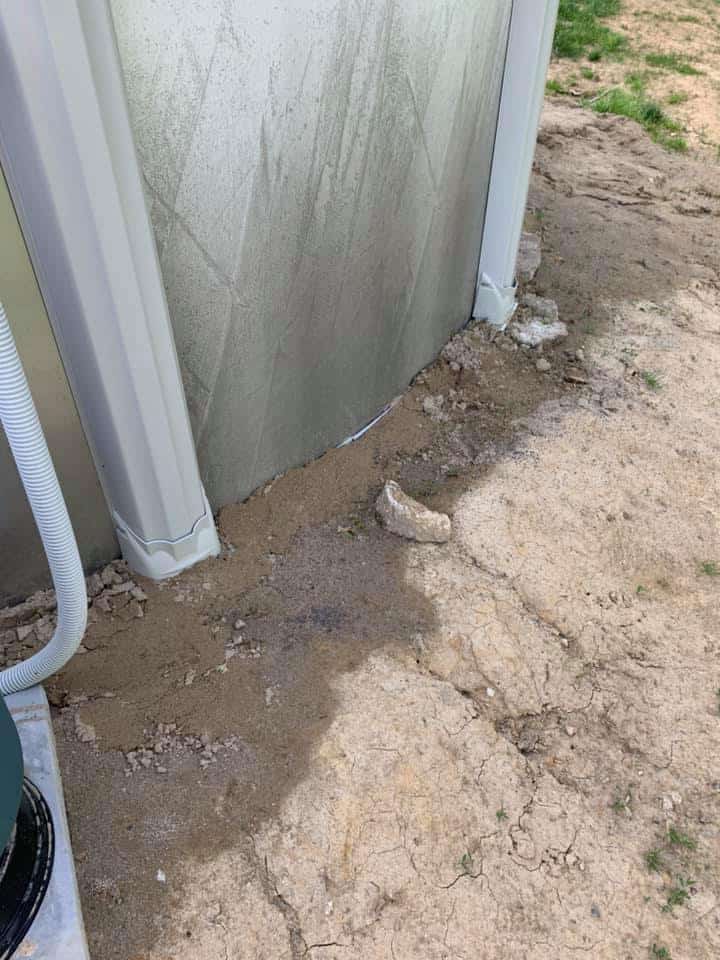
Most people know if they have moles living in their yards. The easiest way to tell is with the trails that they leave.
Moles like soft earth better than hard earth, so they prefer to burrow close to the surface of the earth. Because of this, you usually can easily identify their trails.
If you go out in the yard in the morning and see long humps in the grass, then you are looking at the trails that one made as he traveled just beneath the surface looking for earth bugs to eat.
You may also know if you have moles if you have a cat. Cats (especially young ones) love to capture moles. And they will leave them dead for you at the front door. Nice.
If you aren’t sure if you have moles and are installing an above-ground pool, you could remove the grass or sod from your install site and wait a day or two before installing the pool.
If you have moles, they will most likely tunnel in this new soft area you made within a day or two. And you’ll easily see their trails without the presence of grass.
WHAT REGIONS DO MOLES LIVE?
Moles live in most areas of the United States, some of Canada, Europe, and Asia. There are different species of moles, but the one most common to readers here is the Eastern mole.
HOW CAN I PREVENT MOLES FROM GOING UNDER MY ABOVE GROUND POOL?
I’m not a pest specialist and don’t know much about moles, but I can tell you this –
“You most likely will not be able to prevent moles from tunneling under your above-ground pool”.
During the three and a half decades of installing and working on above grounds, I have seen a lot of ways that people have tried to prevent moles from going under their pools. And I can’t think of any that were one hundred percent successful.
JOHN A HAD A MOLE PROBLEM
This guy in Cocoa, Florida named John A had moles in his yard that would go under his pool.
I installed two brand new pools and a new wall over a twenty-year period for John on the same spot. Each time I would install a pool for him, he would talk about his mole issues.
In the first years, he tried poisons and traps for moles. That didn’t stop them. Later, he poured a concrete border all the way around his 24’ round pool. It looked really nice but didn’t stop the moles.
A couple of years later, he buried a plastic border six inches in the ground just inside his concrete border. His thinking was that the moles wouldn’t go that far in the ground to go under the 6” deep barrier. He was wrong and they made it through.
The second to last time I was out at John’s pool site, I installed a new wall for the pool that was covered by a manufacturer’s warranty. At that time, he replaced his six-inch deep plastic border with a twelve-inch deep aluminum flashing border. He was now convinced that the moles would not travel the full foot deep in order to get below the barrier.
Three years ago, I returned to John’s backyard. This time his pool needed to be replaced and I replaced it. When I asked him if he still got moles under his pool, he said he did, but not nearly as much.
Those moles went a full foot in the ground just to get to the bottom of John’s pool. As I took down his existing pool, I could see that there was indeed some evidence of moles in his pool bottom.
That’s when I decided that nothing can stop moles from tunneling under an above-ground pool if they want to.
HOW BIG OF A PROBLEM CAN MOLES BE ON ABOVE GROUND POOLS?
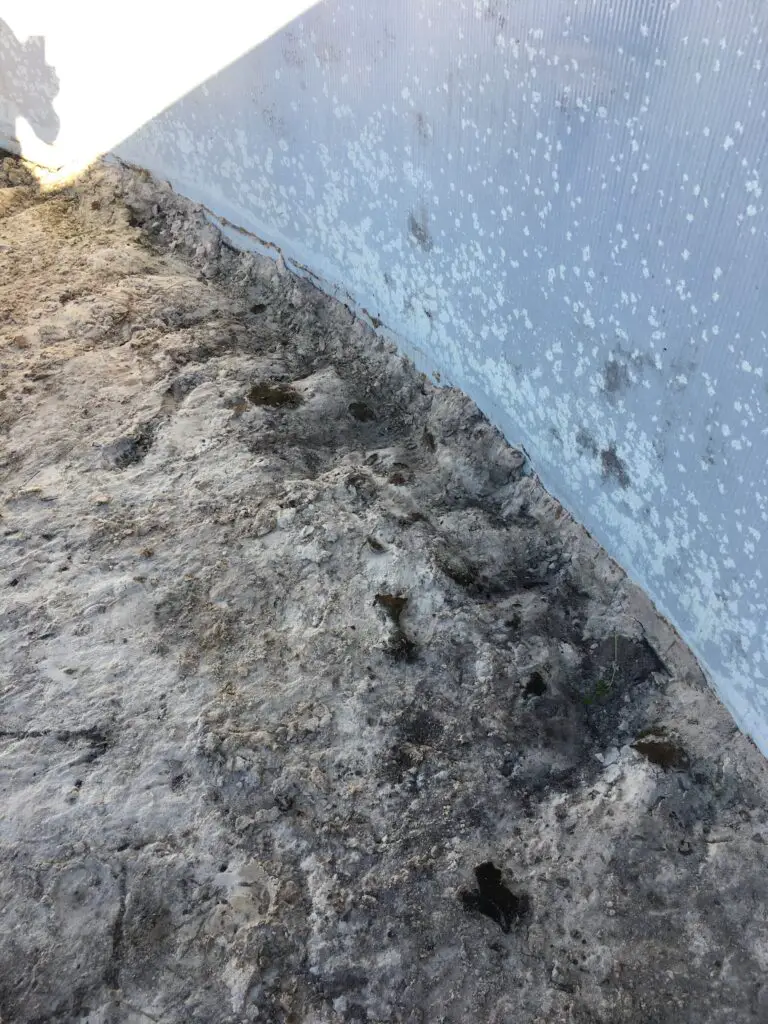
Here in Central Florida, I see mole damage to pool bottoms often. In reality, it’s not something to worry too much about. In most cases, the moles will cause some divots close to the pool’s wall and that’s it.
I have rarely seen moles tunnel far into a pool bottom. My theory is that they feel the extra pressure of the water and the liner, sense something is wrong, and turn around and exit the area.
Also, after asking a lot of pool owners with mole damage, many have said that the mole damage happens within the first few months of the pool being up. Then they stop tunneling under. My feeling here is that the moles realize that this is not an area that they want to go, so they stop.
I have very rarely seen holes in the pool’s liner where there was mole damage. I don’t think there’s anything sharp enough on a traveling mole to cause a hole in the liner. And liners stretch and conform nicely to divots and small pockets in the ground.
The good news too is that moles are NOT like rats. They don’t overpopulate and live on top of each other. In most cases, you’ll only be dealing with one or two moles as they live in solitary. I have seen some extensive mole damage, but usually it’s not too much because only one or two of them is visiting your pool and may only visit once.
WHAT CAN YOU DO TO PREVENT MOLE DAMAGE IN THE POOL BOTTOM?
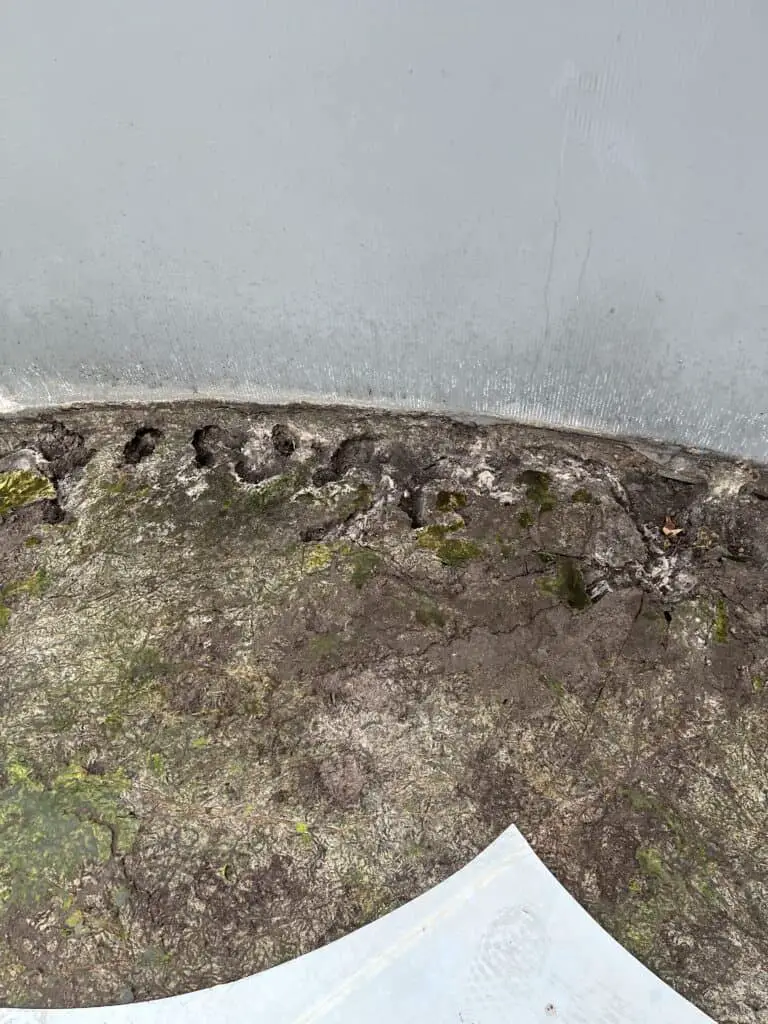
Not all yards have moles so I’m not sure that you should worry too much about it. As stated earlier, mole damage typically isn’t too bad as they don’t live like rats.
If you are concerned about moles and want to do something about preventing the bottom from being damaged, then there are a couple of things you can do to help and one thing you can do that will work well.
There is no full-proof way to stop moles from traveling under an above-ground pool. Deep barriers, poisons, traps, and young cats may help kill moles, but if they are in the yard and want to get underneath, they will.
So, the only real thing you can do is to put something down during the installation of the liner that will minimize the damage when they do “crawl your site”.
Foam coving and liner guard pad
These two items are very popular right now. The foam coving is good in that the moles can’t displace them when they crawl under them. This is good as it’s important for the coving to stay in place. The liner can never touch any parts of the pool’s bottom track.
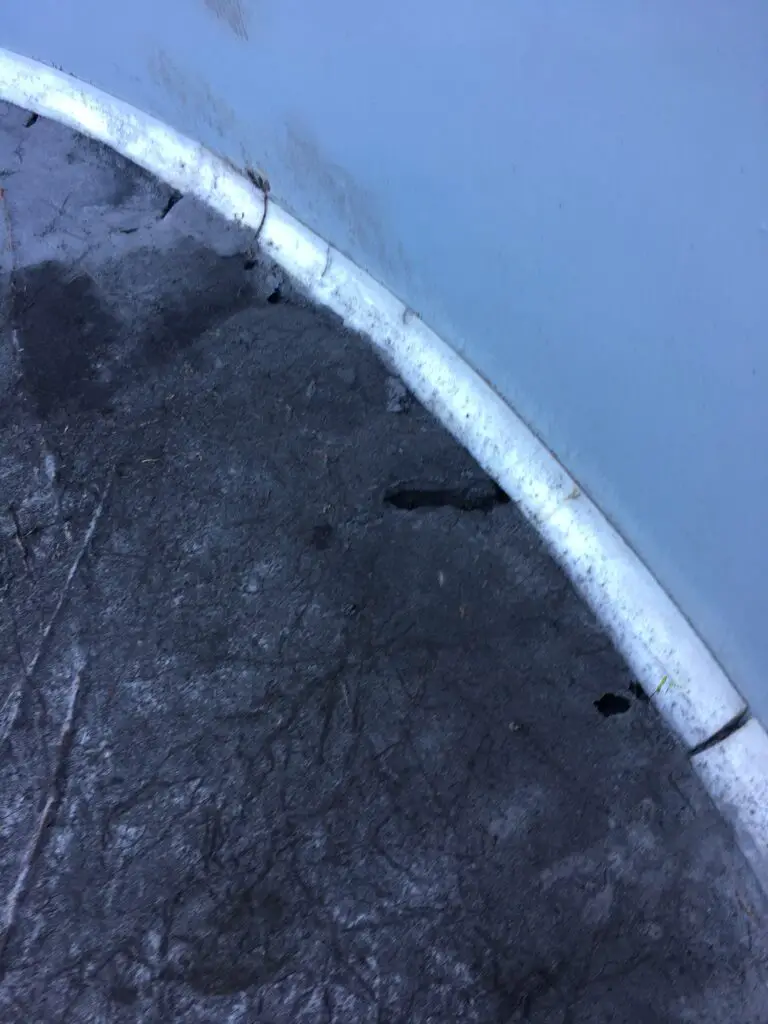

The liner guard is just a thin blanket that goes down right before putting in the liner. This product isn’t rigid enough to stop the moles from causing ruts in the pool bottom. It will provide a barrier between the mole trails and the liner, which is good.
Vermiculite
As a guy who has installed for 35 years, vermiculite brings me back a little as it used to be quite popular to use for above-ground pool bottoms.
Vermiculite lost its popularity when the industry found out how cancerous the product is. I still see it on pool bottoms occasionally though.
If applied thick enough, vermiculite can prevent most of the mole damage as the earth displaced underneath will be minimized by the thick layer of “vermicci” above.
Perlite
Just like vermiculite, perlite was a fairly frequently used material for above-ground pool bottoms. Then we found out that perlite traps moisture and most of the installers stopped using it as it can rust a pool’s wall.
Perlite gets hard when applied to the earth under an above-ground liner, so it’s good for preventing mole damage. Again, if a thick enough layer is applied, it will stay hard enough to not displace when a mole travels in the earth directly below.
Knowitall tip: If you want to use vermiculite or perlite for preventing pool floor damage from moles, apply it around the inside perimeter of the pool in about a two-foot wide area only (Only have the product from the wall inward only two feet wide). Leaving the rest of the pool bottom without it will allow any moisture to go into the earth. You don’t have to make the entire bottom “mole damage proof” as they rarely travel in from the wall more than a foot or so.
Foam sheeting
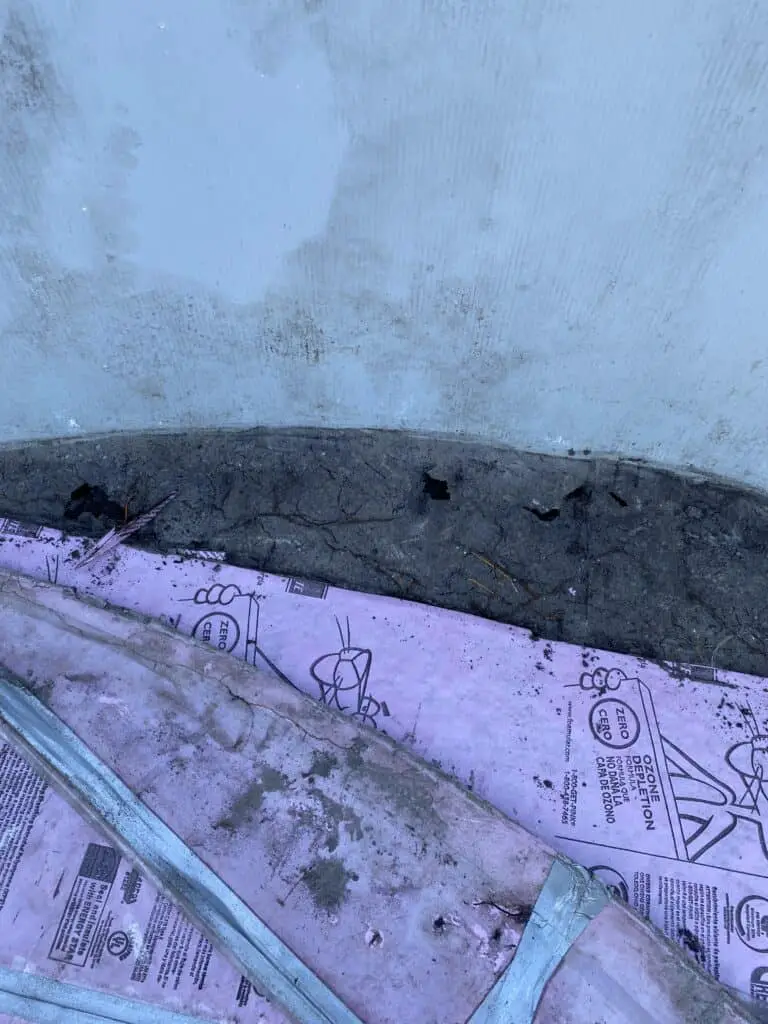
Many DIYers and some installers will use 4’x 8’ foam boards to make a bottom for their above-ground pool. This is done by cutting the boards and taping them together to make the shape of the pool bottom.
I never recommend making a foam board pool bottom because of the risk of trapping moisture, but as long as you use the thicker boards (5/8”), then they will stay rigid enough to prevent the moles’ trails from being felt.
Concrete
Concrete is expensive and has a couple of drawbacks to being used as a floor for above grounds, but it will absolutely prevent any mole damage.
SEMI-INGROUND POOLS DON’T GET MOLE DAMAGE
It’s worth noting here that when you bury an above-ground pool deep enough, the moles won’t go under the pool.
It might depend on the region you live in, the type of earth your yard has, and which species of mole you have as to how far down you have to go. In Central Florida, I can tell you that I’ve never seen mole damage in a pool that was buried 18” or deeper.
I’m not suggesting that you bury your pool down just to prevent mole damage. Just that if you are planning on a semi-inground installation, then you won’t have to worry about moles.

What do you think of installing a layer of galvanized fencing or something similarly rigid, buried under a couple inches of sand? If the moles burrow tunnels the rigid fence material would keep the liner from settling into any divots or tunnels. Taking caution to make sure there would be no vulnerability for hole punctures. I am trying some logical brainstorming)
I would go with something solid instead of fencing. They may get through the fencing. Not sure it will work anyway, but I would go at least 1 foot down all the way around. And have rocks on top in case they decide to go over instead of under.
I have very deep sink holes all insidemy pool the pool looks like its ready to fall in,. Paid $9000.00 dollars and its not even 3 months old . Any suggestions please help
I’ve never seen a pool full of water cave or fall in, so don’t worry about that. Did you send pics to the installer? I would start with that.